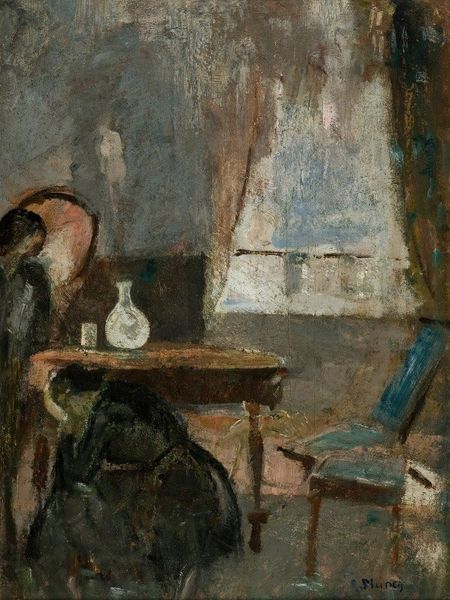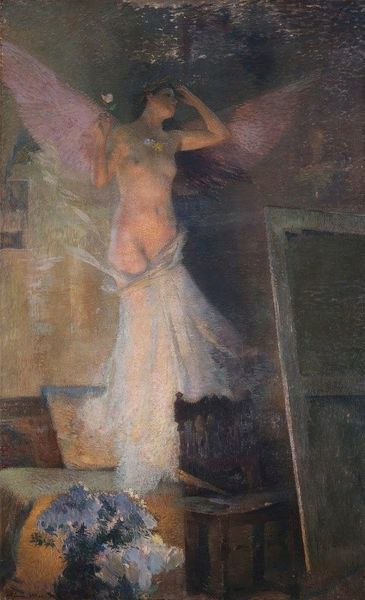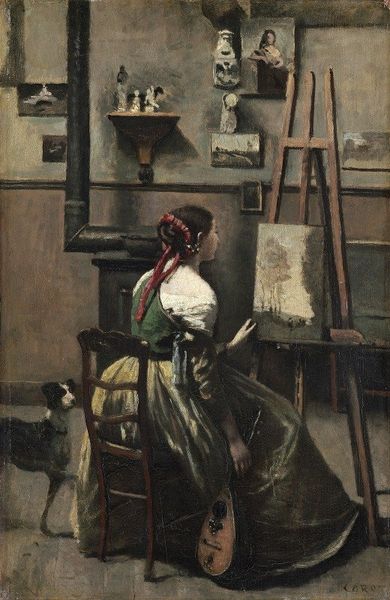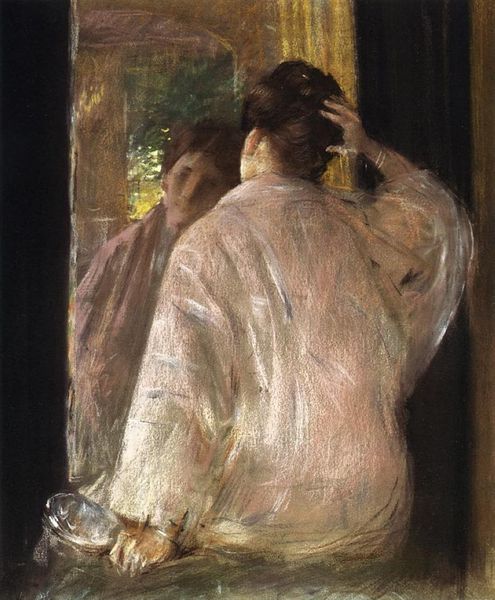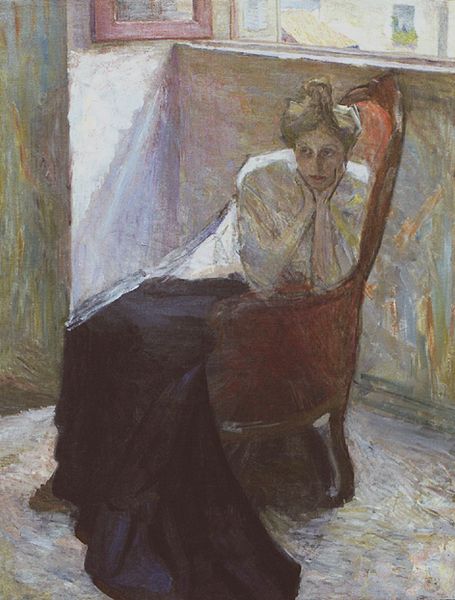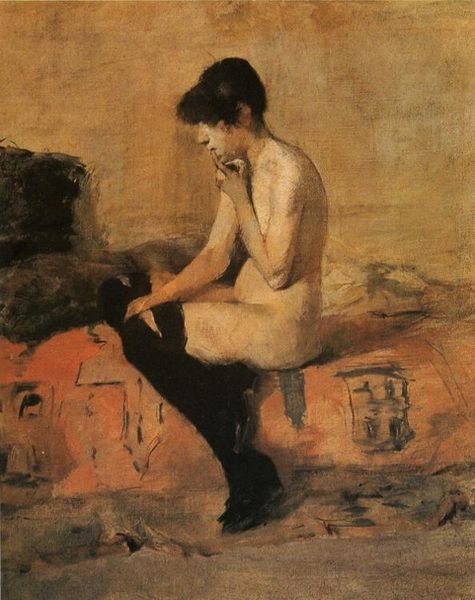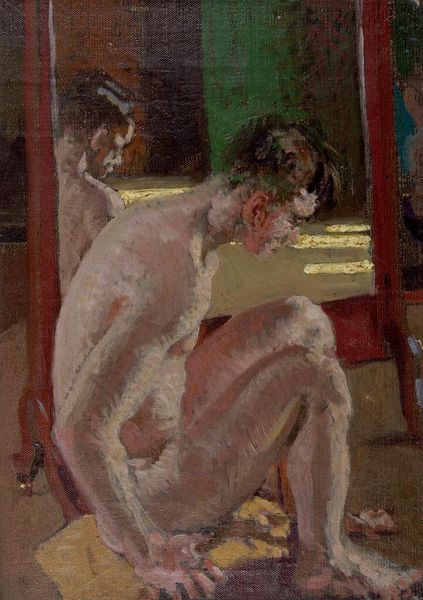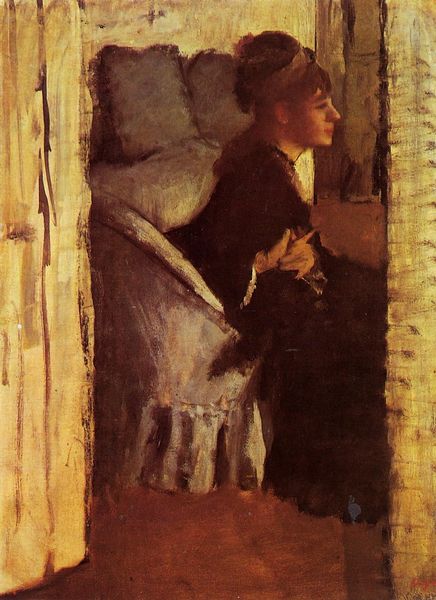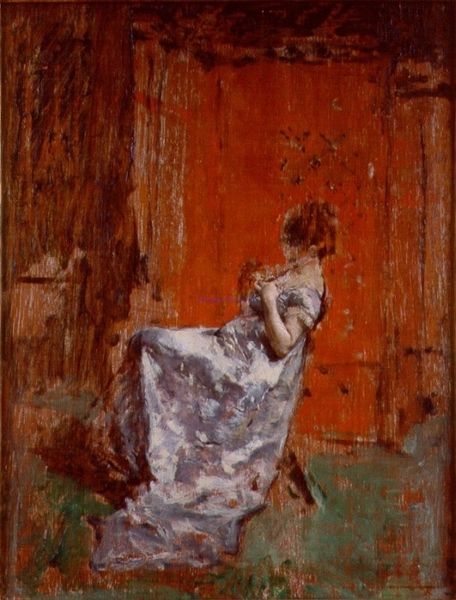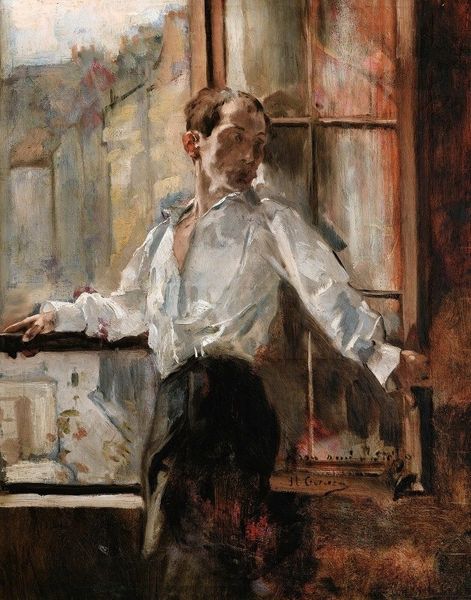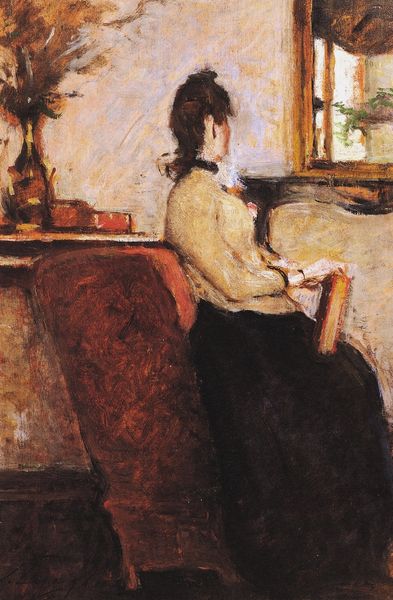
Copyright: Public domain
Editor: This is Konstantin Korovin's "An Artist's Studio", an oil painting from 1894, currently housed in the Tretyakov Gallery. It strikes me as a study in contrasts - light and dark, finished versus unfinished. What aspects of its visual composition stand out to you? Curator: The most immediate aspect is indeed the interplay of light and shadow. Note how Korovin uses a limited palette, predominantly earth tones, punctuated by strategic highlights. The texture is crucial, achieved through visible brushstrokes, lending an almost palpable materiality to the depicted space. Do you observe any spatial ambiguities created by the composition? Editor: I see how the figure seems to blend into the background. Is this a consequence of the color choices or is there something more to the placement of the figure within the artist's studio? Curator: Consider how the lack of precise detail forces the viewer to engage in a process of visual completion. Observe that the figure is positioned centrally, yet rendered with the same level of "incompleteness" as the surrounding environment. This imbues the studio with a dream-like atmosphere. Does the absence of a clearly defined subject alter your interpretation of the scene? Editor: It does. I was initially drawn to the implied narrative, but now the overall impression feels more important. I was curious about a portrait, but its "incompleteness" shifts the emphasis to the artistic process itself. Curator: Precisely. The studio becomes a landscape of the artist’s interiority, revealed through the application of paint. The significance resides in the interplay of formal elements rather than narrative content. Editor: This formal approach really brings to light how the very act of painting is front and center. Thank you, that was insightful. Curator: My pleasure. A closer look always reveals the considered construction beneath the surface.
Comments
No comments
Be the first to comment and join the conversation on the ultimate creative platform.
